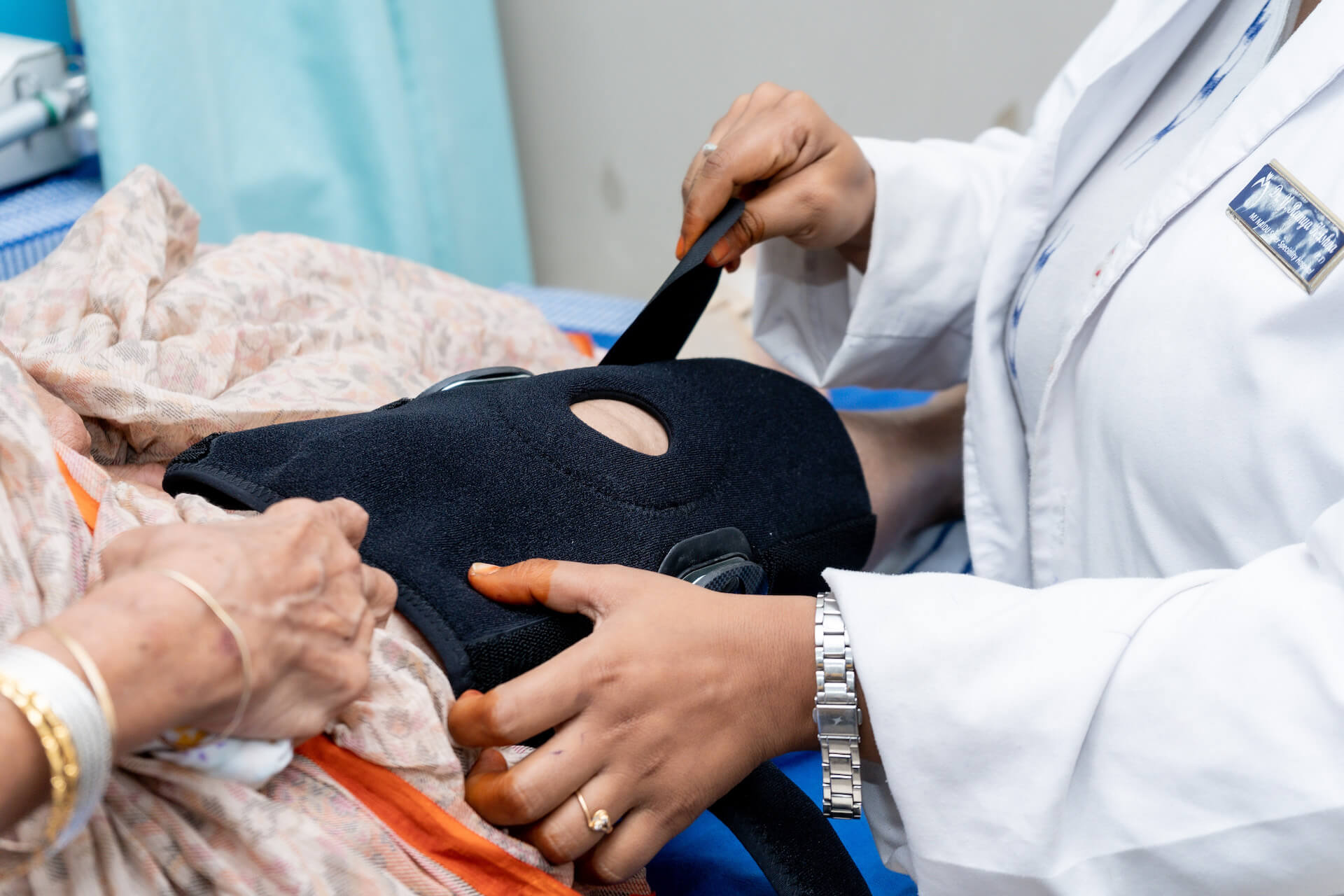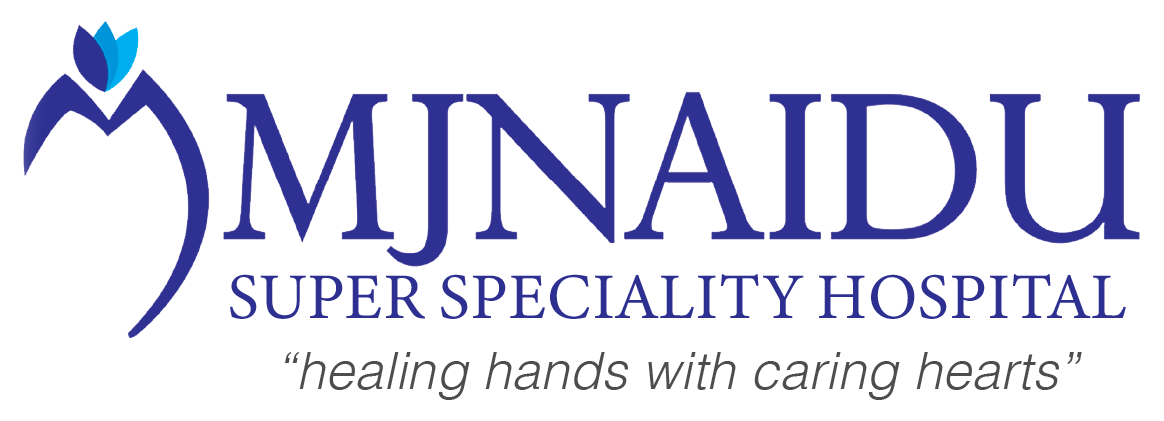MJ Naidu Super Speciality Hospital
- Home
- /
- PAIN MANAGEMENT
PAIN MANAGEMENT

One of the Best Orthopedic Hospitals in Vijayawada for Pain Management
Welcome to MJ Naidu Super Specialty Hospital, where your relief from orthopedic pain is our priority.
Pain is an inevitable part of the human experience, and when it comes to orthopedic issues, it can be especially worsening. Orthopedic pain can affect the bones, joints, muscles, ligaments, and tendons, making even the simplest daily activities a challenge. At MJ Naidu Super Specialty Hospital, we understand the challenges that patients face when dealing with orthopedic pain, and our commitment to pain management is unwavering.
Orthopedic pain is a complex and often persistent issue that requires specialized care and management. In this comprehensive guide, we will delve into the critical aspects of pain management in orthopedic care. We will explore the various types of orthopedic pain, the techniques and therapies that can alleviate this pain, and the holistic approach we take at MJ Naidu Super Specialty Hospital to provide the utmost level of care to our patients.
Orthopedic pain management is not just a service we provide; it’s a mission we embrace. We believe in enhancing the quality of life for our patients by effectively managing their pain, restoring their mobility, and allowing them to regain their independence. Our team of dedicated specialists, cutting-edge technology, and comprehensive approach set us apart as a leading institution in the field of orthopedic pain management.
Pain is a common symptom experienced by individuals with orthopedic conditions. Whether it’s arthritis, a fracture, a sports injury, or chronic back pain, effective pain management is crucial for improving the quality of life and promoting the healing process.
At MJ Naidu Super Specialty Hospitals, we understand the challenges of living with orthopedic pain, and we’re committed to providing you with the best pain management strategies available.
Understanding Orthopedic Pain
Orthopedic pain is a broad category of discomfort and suffering that affects the musculoskeletal system, comprising the bones, joints, muscles, ligaments, and tendons. It is a prevalent and often persistent issue that can significantly reduce a patient’s quality of life. In this section, we will define orthopedic pain, delve into its prevalence, and explore the various types of orthopedic conditions that lead to this pain.
Defining Orthopedic Pain
Orthopedic pain is the pain and discomfort that originates from the musculoskeletal system, which plays a crucial role in our ability to move, perform daily activities, and maintain our overall well-being. It can manifest as acute or chronic pain, affecting patients of all ages, from young athletes to the elderly. Effective pain management is essential for enhancing mobility and quality of life.
Prevalence of Orthopedic Pain
Orthopedic pain is a prevalent health issue that impacts millions of individuals worldwide. Whether it’s the result of an injury, a chronic condition, or degenerative changes in the musculoskeletal system, orthopedic pain is a leading cause of disability and a common reason for seeking medical care. Understanding the underlying causes of orthopedic pain is the first step towards effective management.
Types of Orthopedic Conditions Leading to Pain
Orthopedic pain can arise from various underlying conditions, including:
Arthritis: Arthritis is a collective term for conditions that cause joint inflammation. Common types include osteoarthritis, rheumatoid arthritis, and gout. Arthritis can lead to persistent discomfort, stiffness, and a reduced range of motion.
Fractures: Fractures, or broken bones, result from injuries and accidents. These can cause acute pain and require proper diagnosis and treatment for effective healing and pain relief.
Tendinitis: Tendinitis occurs when tendons become inflamed due to overuse or injury. Common in areas such as the shoulders, elbows, and knees, it results in persistent pain and limits mobility.
Strains and Sprains: Muscle strains and ligament sprains can lead to acute pain, often following strenuous physical activity or accidents.
Herniated Discs: Herniated discs in the spine can cause chronic back and leg pain, making daily activities challenging.
Sciatica: Sciatica is characterized by radiating pain from the lower back down the leg, often due to compression of the sciatic nerve. It can be extremely uncomfortable and debilitating.
Osteoporosis: Osteoporosis weakens bones and can lead to fractures and pain. Proper management is essential to reduce the risk of injury.
Joint Degeneration: The gradual deterioration of joint cartilage, commonly seen in osteoarthritis, leads to chronic joint pain and stiffness.
Understanding the specific type and cause of orthopedic pain is vital in developing an effective treatment plan. At MJ Naidu Super Specialty Hospital, we specialize in diagnosing and managing a wide range of orthopedic conditions, ensuring that patients receive the most appropriate care for their unique needs.
- 24HRS TRAUMA SERVICE
-
24HRS DIGITAL X-RAY / MRI/CT / USG / X-RAY /
DOPPLER /ECHO - 24HRS LABORATORY
- 24HRS PHARMACY
- 24HRS AMBULANCE SERVICE
- INTENSIVE CARE UNIT
- CASUALTY DEPARTMENT
- FULLY EQUIPPED OPERATION THEATER (2 LAMINAR )
Other Services
Why does one need to control Pain?
Pain serves as an alert to potential or actual damage to the body. Any damage to the body or its organs starts a chemical reaction in the body, which is relayed to the brain. Brain senses it as pain reacts accordingly.
Best Quality Service
Personalised Care
Experienced Doctors
Competitive Prices
Types of Orthopedic Pain
Orthopedic pain can manifest in various forms, and understanding these types is crucial for effective pain management. Three primary categories of orthopedic pain are acute pain, chronic pain, and neuropathic pain.
Acute Pain: Acute orthopedic pain is sudden and often intense. It typically stems from injuries, fractures, or surgical procedures. Patients with acute pain may experience sharp, stabbing discomfort, making daily activities challenging. For instance, a person who sustains a sports-related injury may encounter acute pain in the affected joint, limiting their ability to move freely.
Chronic Pain: Chronic orthopedic pain persists for an extended period, often for several months or even years. It can significantly impact a patient’s quality of life, affecting mobility and overall well-being. A classic example is someone suffering from long-term osteoarthritis in their knees, leading to chronic, persistent pain that can disrupt their daily activities and reduce their overall quality of life.
Neuropathic Pain: Neuropathic pain is a condition that arises from nerve damage or dysfunction. Conditions such as sciatica or peripheral neuropathy can lead to neuropathic pain. Imagine a patient with sciatica experiencing radiating pain from their lower back down to their leg due to compression of the sciatic nerve. Neuropathic pain can be challenging to manage due to its unique nature.
Pain Management Techniques
In orthopedic care, a spectrum of pain management techniques is employed to alleviate discomfort, enhance mobility, and improve the overall quality of life. These techniques encompass a comprehensive approach to address various orthopedic pain types and causes:
Medications: Medications are often a frontline approach to pain management. Non-steroidal anti-inflammatory drugs (NSAIDs) can reduce inflammation and provide relief from arthritis pain. Analgesics like acetaminophen offer effective pain control, while muscle relaxants help alleviate muscle spasms. Opioids are reserved for severe pain but used cautiously due to the risk of dependence.
Physical Therapy: Physical therapy plays a pivotal role in orthopedic pain management. It involves exercises, stretches, and manual therapy techniques that enhance mobility and strengthen muscles. It is particularly effective for chronic pain and post-surgical rehabilitation, as it helps patients regain functional abilities.
Orthopedic Surgery: Surgery is considered when other options prove insufficient. Minimally invasive procedures and joint replacements can restore function and provide relief from chronic orthopedic pain.
Lifestyle and Dietary Modifications: Orthopedic pain management isn’t limited to medical interventions. Encouraging patients to maintain a healthy lifestyle and make dietary adjustments can significantly contribute to pain reduction and overall health.
Psychological Support: Chronic pain can take a toll on mental well-being. Psychological support offers coping strategies and emotional assistance to patients, enhancing their overall pain management experience.
At MJ Naidu Super Specialty Hospital, we offer a personalized approach, ensuring that each patient receives the most appropriate and effective pain management strategies tailored to their unique circumstances.
Physical Therapy for Pain Management
Physical therapy is a fundamental component of orthopedic pain management, and it plays a pivotal role in helping patients regain mobility, reduce pain, and improve their overall quality of life.
Role of Physical Therapy:
Physical therapists are highly skilled healthcare professionals who specialize in assessing and treating musculoskeletal conditions. They work closely with orthopedic patients to address pain, stiffness, and mobility issues.
The primary goals of physical therapy in orthopedic pain management include:
Assessment: Physical therapists conduct a comprehensive assessment to understand the patient’s specific condition and pain sources. This assessment helps in tailoring the treatment plan to the individual’s needs.
Customized Exercise Routines: Based on the assessment, physical therapists design customized exercise routines and techniques. These exercises are targeted to strengthen muscles, improve joint flexibility, and enhance overall mobility.
Pain Reduction: Through a combination of therapeutic exercises and manual therapy techniques, physical therapists aim to reduce pain and discomfort. This approach helps patients regain functionality and independence.
Preventing Recurrence: Physical therapy not only addresses existing pain but also focuses on preventing the recurrence of orthopedic issues. Patients are educated on proper body mechanics and techniques to minimize future pain.
Customized Exercise Routines:
Physical therapists develop exercise routines that are tailored to the patient’s specific condition.
These routines may include:
Strength Training: Exercises to build and strengthen muscles around affected joints, reducing the load on the joint itself.
Range of Motion Exercises: Techniques to improve joint flexibility, increasing the ability to move freely without pain.
Stretching Exercises: Stretching routines to alleviate muscle tightness and improve overall mobility.
Balance and Coordination Exercises: Enhancing balance and coordination is essential for fall prevention and safe movement.
Modalities: In some cases, physical therapists may use modalities like heat, cold therapy, or electrical stimulation to complement exercise routines and reduce pain.
Physical therapy is a critical part of orthopedic pain management, focusing on improving function and enhancing the patient’s quality of life. The goal is to empower patients to take an active role in their recovery, ensuring a faster return to their daily activities and a life with reduced pain.
The incorporation of modern robots and machines in physiotherapy at MJ Naidu Super Specialty Hospital is of paramount importance. These cutting-edge technologies bring precision and targeted therapy to orthopedic and musculoskeletal rehabilitation, ensuring consistent and repetitive exercises that are tailored to individual patient needs. They engage patients through interactive interfaces and gamification, encouraging compliance with treatment plans, while also enabling objective progress tracking.
Moreover, these machines enhance safety, minimizing the risk of injury during rehabilitation, making them particularly valuable for post-surgical and acute pain cases. They optimize resource utilization, freeing healthcare providers for more complex cases, and position the hospital as a leader in state-of-the-art rehabilitation, improving patient outcomes, increasing satisfaction, and providing a competitive advantage in the healthcare industry.
Why Choose MJ Naidu Super Specialty Hospital
MJ Naidu Super Specialty Hospital stands out as the premier choice for orthopedic pain management in Vijayawada, offering a compelling array of advantages that make it the ideal destination for patients seeking comprehensive care and lasting relief. Our distinguished team of orthopedic specialists and pain management experts, armed with years of experience and a commitment to staying at the forefront of medical advancements, guarantees the highest level of expertise.
Complemented by state-of-the-art technology, our hospital ensures precision, accuracy, and patient safety throughout the diagnostic and treatment journey. Moreover, we take pride in our unwavering dedication to improving the quality of life for our patients, with a remarkable track record of successfully managing orthopedic pain.
Our comprehensive approach, from diagnostics to surgery and rehabilitation, ensures seamless continuity of care, resulting in positive outcomes that transform lives.
Choose MJ Naidu Super Specialty Hospital for world-class orthopedic care that puts your well-being first.

